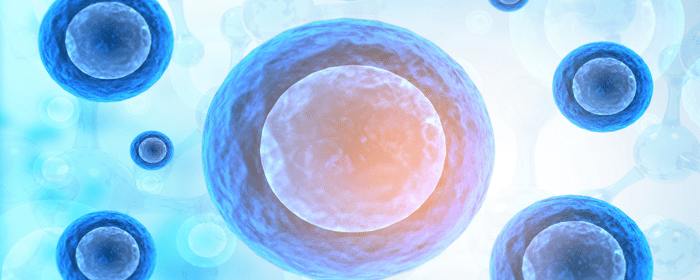
by admin | Feb 8, 2024 | Spinal Cord Injury, Mesenchymal Stem Cells, Stem Cell Research, Stem Cell Therapy
Spinal cord injury is one of the most complicated and serious pathological impairments affecting the central nervous system. Since the human body is unable to regenerate and repair the spinal cord after injury, there is a high likelihood of suffering permanent damage and disability.
Often compounding the issue of SCI, secondary events occurring after the initial injury to the spinal cord significantly reduce cell migration and axonal regrowth and limit repair and regeneration.
Recently, transplantation of mesenchymal stem cells (MSCs) has been shown to promote the repair of injured spinal cord tissues in animal models. However, as Qu and Zhang highlight in this review, there remain many unanswered questions that are essential for improving the effects of this MSC therapy. As such, the authors focus this review on recent information about the behavior and function of MSCs in SCI, the function of biomaterials to direct the behavior of MSCs, and the attempt to emphasize combinational strategies such as tissue engineering for functional improvements of SCI.
There are studies showing that the migratory and homing capacities of MSCs are closely related to their engraftment and regeneration ability. Considering this, the authors highlight the importance of having MSCs migrate and integrate into host spinal cord tissue. Since MSC homing toward injured tissue is not an efficient process, and to ensure a more effective stem cell therapy outcome, it is important that these transplanted cells be introduced in a way that increases the migratory potential of healthy MSCs to the site of injured tissue.
Additionally, while transplanted cells have been identified adjacent to neurons after SCI, the surviving number of grafted and differentiated neurons was too small to be considered to contribute to functional recovery after SCI. However, data suggests that the ability of MSCs to secrete soluble factors or vesicles rather than engrafting and transdifferentiating might serve an important role in SCI repair.
The authors also point to studies that indicate MSC implantation could promote a therapeutic effect and functional recovery in experimental SCI animal models. The authors believe that this is a result of MSCs ability to differentiate into specialized neuronal and glial cell lineages after transplantation. While MSC transplantation has not yet been proven to be an effective and reliable therapy for SCI, additional studies need to be done before the therapy is utilized in clinical applications.
MSCs respond to the local environment in multiple ways and represent the most promising exosomes for neuropathic applications. Qu and Zhang conclude this review by calling for more intensive studies examining the potential benefits of combining MSCs with nerve tissue-engineered scaffolds to direct cell behaviors after SCI, including growth, migration, and differentiation.
Source: “Roles of Mesenchymal Stem Cells in Spinal Cord Injury – Hindawi.” https://www.hindawi.com/journals/sci/2017/5251313/.

by admin | Feb 1, 2024 | Psoriasis, Mesenchymal Stem Cells, Stem Cell Research, Stem Cell Therapy
Characterized by scaly white or erythematous plaques, psoriasis is a chronic autoimmune dermatological disease most often appearing on the scalp, genitalia, lumbosacral area, and extensor surfaces of the limbs.
Affecting an estimated 125 million people worldwide, the condition most commonly is observed in those between the ages of 15 and 25 years of age.
The most recent advancements in the development of biological treatment have revolutionized the treatment of the condition for those with moderate to severe psoriasis, achieving clear or nearly clear skin with long-term success.
However, these treatments in their current form have not been proven to cure psoriasis completely. Additionally, a growing number of those suffering from severe psoriasis are not responding to these current therapeutic treatment options.
Recently, stem cell therapy, including regulatory T-cells, hematopoietic stem cell transplantation, and mesenchymal stromal cells (MSCs) have been used in patients with recalcitrant psoriasis. In this review, Naik discusses stem cell treatment options available for psoriasis.
Regulatory T-cells, or Tregs, regulate or suppress other immunocytes by modulating their responses to the endogenous environment and antigens, which helps to avoid autoimmune reactions and chronic inflammation. Several treatments for psoriasis, including many biologics currently being used, appear to increase the number of Tregs and their performance in patients with psoriasis. This finding led Naik to conclude that, despite their high cost, Treg-based therapies may have the ability to interfere with the pathogenesis of psoriasis.
MSCs have been found to have a significant role in adaptive immunity. This immune-enhancing activity typically occurs in partnership with a number of immune cells, including neutrophils, dendritic cells, monocytes, natural killer cells, macrophages, B-cells, and T-cells. While several Phase I and II studies have not demonstrated significant toxicity, the author calls for more extensive controlled trials to better understand the efficacy and long-term safety of MSCs in this application.
The favorable results observed when using hematopoietic stem cells (HSCT) in a wide range of autoimmune conditions, including lymphoma, leukemia, lupus, diabetes, rheumatoid arthritis, and multiple sclerosis, led to interest in using these cells in patients with psoriasis. Interestingly, improvements in psoriasis have been observed in patients who have undergone allogeneic (rather than autologous) HSCT, suggesting that hematopoietic stem cells could contribute as a primary cause of psoriasis.
Naik concludes that the application of stem cells in the treatment of psoriasis raises hope for the development of a safe and effective therapy for those suffering from severe forms of the condition. While more data is required before clinical application, MSCs could be a promising therapy for the treatment of psoriasis.
Source: Naik PP. Stem cell therapy as a potential treatment option for psoriasis. An Bras Dermatol. 2022;97(4):471-477. doi:10.1016/j.abd.2021.10.002

by admin | Jan 31, 2024 | Mesenchymal Stem Cells, Stem Cell Research, Stem Cell Therapy
Acute and chronic pancreatitis are associated with local and systemic inflammation that is linked to a host of serious health issues. A result of the digestive juices and enzymes attacking the pancreas, pancreatitis currently has no definite treatment.
Currently, it is estimated that over 6 million people worldwide are afflicted by acute or chronic pancreatitis with the number of diagnoses appearing to be steadily increasing.
The rising interest in stem cell therapy being used to potentially treat a wide variety of other diseases has led to interest in exploring it as a way to aid in the treatment of both acute and chronic pancreatitis.
As part of this review, Chela et al. examine numerous studies using commonly used stem cells to explore their promise in the treatment of pancreatitis.
A number of studies are utilizing stem cells to repair and replace tissue damaged as a result of numerous gastrointestinal diseases, including acute and chronic pancreatitis. In the case of using stem cells, and specifically mesenchymal stem cells (MSCs), to treat pancreatitis, researchers are interested in the ability of these stem cells to regenerate damaged cells and to influence the immunological and inflammatory response resulting from this condition.
A significant issue that has stymied progress in the ability of the pancreas to self-repair and regenerate when affected by pancreatitis is the perceived lack of stem cells found specifically in the tissue of the pancreas. While there has been conflicting research into whether or not stem cells exist in pancreatic tissue, the research reviewed by the authors indicates that there appears to be a tiny amount of stem cells located within pancreatic tissue.
Considering this and considering that additional research indicates that other stem cells found in the pancreas appear to originate from bone marrow (BM), the authors believe the ability of MSCs’ ability to differentiate will support the healing of the pancreas; these include stem cell sources from BM, adipose tissue, umbilical cord, and induced pluripotent stem cells (iPSCs).
Source: “Stem cell therapy: a potential for the perils of pancreatitis – PMC – NCBI.” https://www.ncbi.nlm.nih.gov/pmc/articles/PMC7433995/.

by admin | Jan 25, 2024 | Spinal Cord Injury, Mesenchymal Stem Cells, Stem Cell Research, Stem Cell Therapy
Spinal cord injury is a global term used to capture damage to the spinal cord resulting from trauma (typically in the form of car accidents, falls, or work-related injuries) or from disease or degenerative conditions.
Worldwide, it is estimated that up to 500,000 people suffer some type of spinal cord injury (SCI), with most resulting from car accidents, falls, or violence. The World Health Organization reports that people suffering from SCI are between two and five times more likely to die prematurely as a result of this injury.
To date, there have been limited advances in therapeutic treatment or correction related to SCI, with any therapeutic development focused on treatment of SCI-related symptoms as opposed to the condition itself.
In this study, Muthu et al. analyze evidence of the efficacy and safety of mesenchymal stem cell (MSC) therapy in human subjects with traumatic SCI and identify the therapy’s potential for the future management of SCI.
To analyze this evidence, the authors identified and reviewed studies evaluating the efficacy and safety of stem cell therapy for SCI. Specifically, Muthu et al. screened 321 research articles before narrowing this study down to 66 full-text reviews and finally identifying 19 studies that fit the criteria for this review.
These 19 studies involving 670 subjects demonstrated that those in the identified intervention groups showed statistically significant improvement in key measurement criteria, including the American Spine Injury Association (ASIA) impairment scale grade improvement, ASIA sensorimotor score, activities of daily living score, residual urine volume, bladder function, light touch, and pinprick response.
The authors also found that while no significant difference was noted in motor score or activities of daily living scores, and that the intervention group has significant increase in complications, no serious or permanent adverse events were reported.
Considering these findings, Muthu et al.’s analysis establishes the efficacy and safety of MSC transplantation in the specific areas highlighted above (improvements in AIS grade, ASIA sensory score, and bladder function) without major adverse events. The authors also call for further research to better understand standardized dosing, time, route of administration, and source of MSCs used for transplantation.
Source: Muthu S, Jeyaraman M, Gulati A, Arora A. Current evidence on mesenchymal stem cell therapy for traumatic spinal cord injury: systematic review and meta-analysis. Cytotherapy. 2021 Mar;23(3):186-197. doi: 10.1016/j.jcyt.2020.09.007. Epub 2020 Nov 9. PMID: 33183980.

by admin | Jan 24, 2024 | Neural Stem Cells, Stem Cell Research, Stem Cell Therapy
Neuropathic pain (NP) occurs when the nerves located either inside or outside of the brain and spinal cord are damaged by a lesion or a condition. To date, pharmacological and surgical treatments to address NP have focused on providing symptomatic relief without treating the underlying cause of the condition. These treatment approaches have not been overwhelmingly successful with over 50% of NP patients attaining adequate pain relief.
Recently, an increasing amount of pre-clinical and clinical research has demonstrated cell transplantation-based therapy for NP to be a promising treatment alternative.
In this review, Yin et al. summarize the use of cell grafts for the treatment of NP, synthesize the latest advances and adverse effects, and discuss possible mechanisms to further the development of cell transplant-based therapies for NP.
Neural stem cells (NSCs) demonstrate the ability to divide, self-renew, and differentiate into neurons, astrocytes, and oligodendrocytes; they are also present in a wide array of tissues throughout the body. Considering they are capable of differentiating into neurons and glial, NSCs are considered an ideal candidate cell for replacing damaged nerve cells and delivering trophic factors to the site of lesions contributing to NP. Additional studies have demonstrated NSCs ability to regenerate nerves, offer neuroprotective effects, and secrete a number of factors that enhance the survival of motor and sensory neurons. NSCs transplantation coils also ease NP caused by peripheral nerve injury, a potential benefit that has been observed in animal models.
Olfactory ensheathing cells (OECs) are glial cells that surround and enclose the olfactory nerve bundle and possess the unique ability to transgress the peripheral nervous system (PNS) and central nervous system (CNS). Considering OECs have been shown to have neuro-regenerative functions, they are also considered to be a good choice for treating nerve injury and NP. Studies using animal models have confirmed that OECs transplantation could promote motor recovery and mitigate pain. Although OECs have good prospects of being used for treating NP, the authors call for additional research with longer observation time to verify their long-term effects and safety.
Mesenchymal stem cells (MSCs) can be obtained from a wide variety of sources and can be induced to differentiate into endoderm, mesoderm, and ectoderm cell lines. MSCs are often used for the treatment of diseases involving neuroinflammatory components and have been shown in animal studies to potentially alleviate NP symptoms.
Other cell therapies currently being evaluated for use as a treatment for NP include bone marrow mononuclear cells, GABAergic cells, and genetically modified cells.
The authors conclude that, despite the small number of clinical studies and the lack of systematic evidence, cell therapy as a treatment alternative for NP should be further explored. Specifically, further research should examine the optimal transplantation route, transplantation timing, number of transplanted cells, and transplantation survival rate.
Source: “Cell therapy for neuropathic pain – Frontiers.” 27 Feb. 2023, https://www.frontiersin.org/articles/10.3389/fnmol.2023.1119223.






 St. Petersburg, Florida
St. Petersburg, Florida
